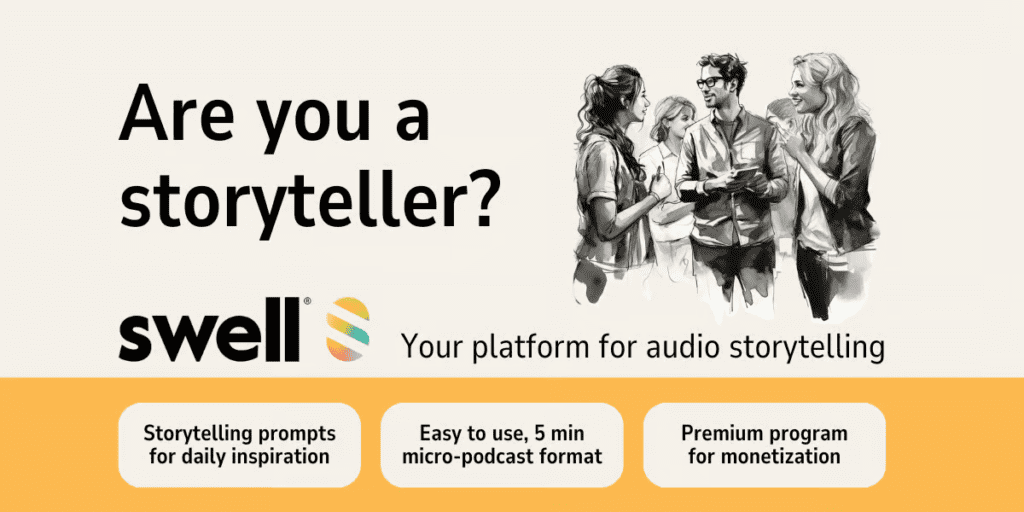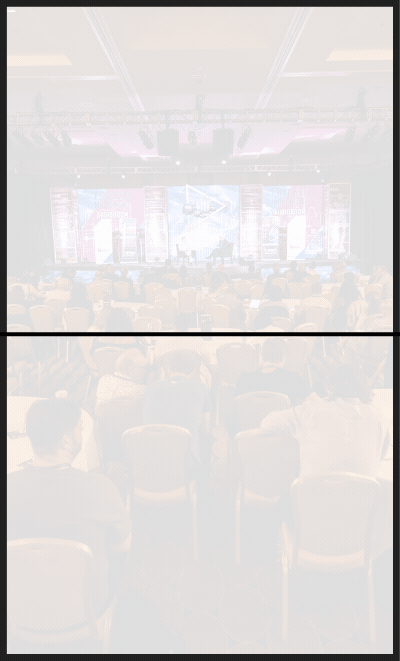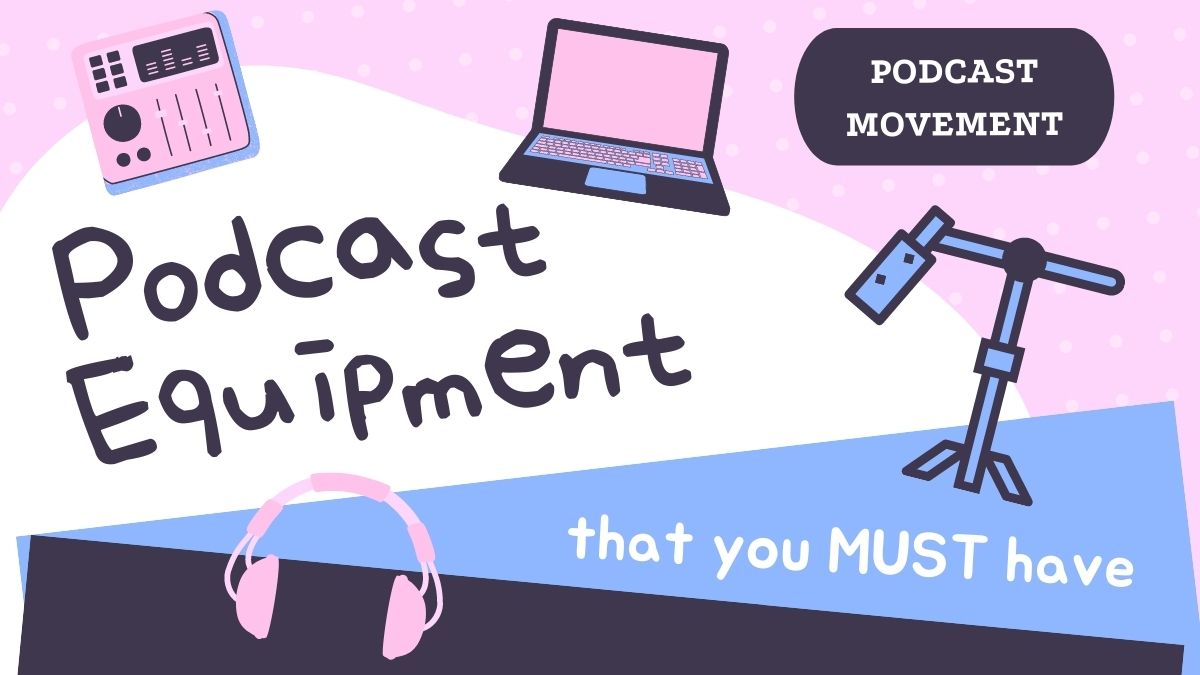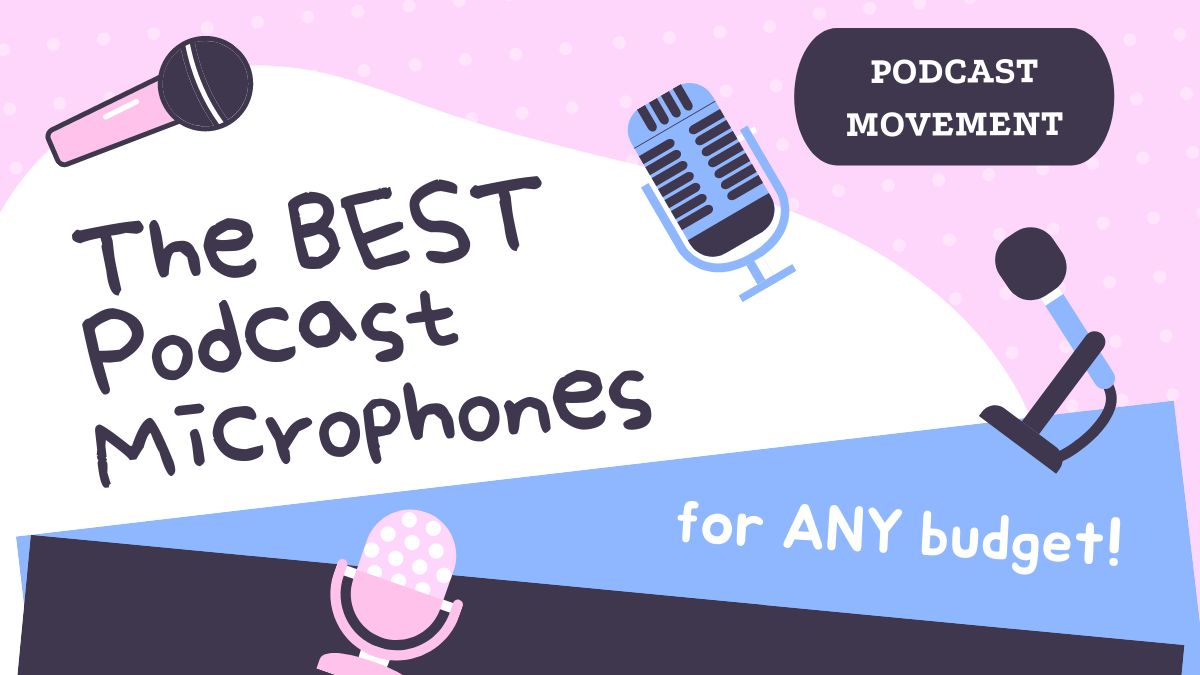
Presented by Swell
The person who makes something today isn’t the same person who returns to the work tomorrow.
Rick Rubin
🧐 The 4-Word Pitch
When you’re working on a new podcast episode, try this exercise: pitch it in four words.
If I can’t pitch a podcast episode in four words, often it’s because the episode’s angle is too complicated or I don’t yet have a deep enough understanding of the idea.
Don’t try to write the four-word pitch first. Instead, drain your creative faucet and get the long description knocked out. By writing out a longer description of the episode, you can lay all the pieces on the table and mold the idea, shaving bits here and there until you fully understand what the episode is about.
You can pluck the four-word pitch right out of this long-form description.
The four-word pitch is more than an exercise in the economy of words. It’s about understanding exactly what themes you’re tackling, what emotions you’d like to convey, and where the heart of your episode truly lies.

Dive into the world of audio storytelling with the Swell app. Use our daily prompts and event-based prompts to inspire your storytelling, or simply talk about your own experiences and life lessons. Join a passionate group of audio storytellers from around the world.
Download the free Swell app to get started.
🎙️ Signal Flow: Sean Tucker
Industry game changers and valiant minds from creative professions share their wisdom, adversities, and paths to innovation.

Sean is a photographer, filmmaker, author, and speaker based in the UK. Over his career to date, he's been fortunate enough to tell visual stories for individuals, NGOs, and big multinational corporations across more than 20 countries. He's traveled many long hours as a solo filmmaker and photographer to create work with a meaningful message. He's also helped organizations to set up in-house studios and trained them to tell their own compelling visual stories. In more recent years he began a popular YouTube channel where he seeks to inspire other creatives, and he's written and published a book sharing his philosophy for the creative life called “The Meaning in the Making.”
The thing about video views or downloads is it becomes a talent score, doesn't it? If you make more money, you're more talented. If you have more people watching or listening, you’re more talented. We know that's not really true. I mean, if you want to get successful on Instagram, get naked or get a puppy. That's a way to get lots of eyeballs on your images. But don't kid yourself and think that if you did either of those things, you suddenly became an amazing photographer because the numbers went up. That's not at all what that means.
I have more followers on Instagram than a lot of Magnum photographers, they're the best photographers in the world. So it's proof that just because I have more followers doesn’t mean I’m better. I'm not a shadow of the photographer that they are, the number doesn't mean anything. So you have to learn to put the numbers aside and just trust your gut and learn over time what good actually looks like beyond popularity.
I think anyone who makes anything for an extended period of time, you know more and more about what's good and bad. And I’ve learned to trust that instinct instead of looking for approval from the world.
I think making art is our human way of pulling order out of chaos. We live in a world where, at the end of the day, we have very little control. There's chaos all around us. We choose colors to put on a canvas or create a composition through our camera viewfinders or take a lump of clay and make a shape out of it to create order that makes us feel good as individuals. But it also makes other human beings feel comfort as well, when they look at something that's been shaped or ordered in a particular way.
The flip side of that is some art is just chaos. And it's meant to be. But I think what we're doing there is we're describing the chaos we experience. And in describing the chaos, ironically, we're creating order. We're showing it to each other and saying, yeah, I feel that, too.
When I put together a frame through a camera viewfinder, I often try to structure it too much. And I know that my growth as an artist is actually to embrace more of the uncertainty and let things hang a bit looser. Describing the chaos rather than just creating the order. I can get so laser-focused on order that I miss the story happening in front of me.
When it comes to critiques for my creative work, I have two tests. I will take a critique from somebody if I know they know what they're talking about, and I know they care about my journey and want to see me get better.
One of the best pieces of advice I’ve read is a blog post called 1,000 True Fans by Kevin Kelly. And he basically says that to be a successful artist of any sort, you only need 1,000 true fans. Because we've got this idea that we need millions of people to care about what we do. And he defines a true fan as somebody who will buy a book if we put it out, or come out to a talk or workshop. And it really put in my head this idea that if I want to sustain myself as an artist and pay the bills, it's not about the big number that grows exponentially on the top, it's just about making sure that I always have at least 1,000 people in there who really care about what I do enough to keep engaging and financially supporting me in little ways.
I think our subconscious mind is much more creative than our conscious mind. If we're sitting and we're trying to work out a solution to a problem, aggressively trying to find that solution, it often happens that we can't find it.
If you want to avoid creative blocks, work out a way to create a generative subconscious mind space as often as you can as a habit, because it will keep you fresh with ideas. Get away from the problem and from other distractions like social media, and let your subconscious get to work.
Right now, I don't really have a metric for success. Just a stubborn belief that I'm going in the right direction. And sticking to it over time, being tenacious, and moving forward with what I think is better work.
Further Exploration
This TED Talk from Dino Ambrosi reframes how we think about our relationships to devices, and shares his ideas on how to create healthy digital habits. Included is an eye-opening chart on how many years of our lives we spend on screens. How much screen time are you willing to trade for deep work on your podcast?
ICYMI:
Enjoying The Noise Gate? Why not share it with a fellow podcaster?
Until next time, have a bold week.
– Doug
For advertising information, contact Kristy at kristy@podcastmovement.com




Join the Movement